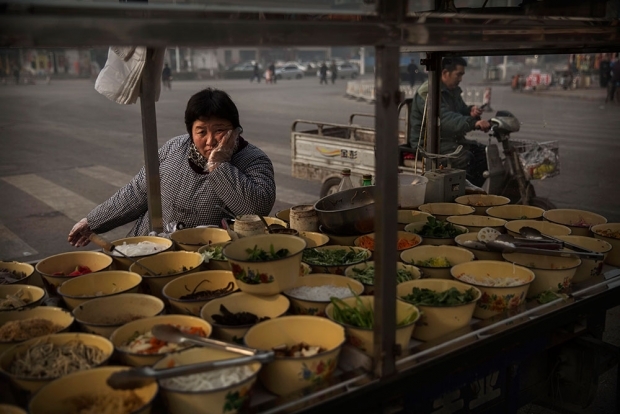Concern about the middle-income trap has grabbed public attention again. The minister of finance, Lou Jiwei, recently said at Tsinghua University that China had a “50-50 chance” of sliding into it in the next five to 10 years. However, many inaccurate versions of his speech are circulating on the Internet, causing widespread concern, and it is important to have a complete and accurate understanding of his views.
Lou actually made reference to two scenarios in this speech. In the first, he said that if China forged ahead with structural adjustments, the economy could grow 6.5 percent to 7 percent in the mid-term—a more upbeat outlook. However, it is the second possibility—the middle-income trap—that raised more interest online, although his speech was focused much more on the first. His analysis is based on the great success of China’s economy and institutional foundations, while looking at the risks and problems. The conclusion was practical; whether China can avoid the middle-income trap will depend on whether comprehensive reforms can change the growth model, making the country a highly competitive innovator.
The concept of the middle-income trap was first put forward by the World Bank in its 2006 report on the development of East Asian economies. The idea is that in many middle-income economies, growth slows and they are unable to move up to high-income status. Japan and the four Asian tigers are a few of the examples of countries that have high-income economies. Most Latin American countries have fallen into the trap. And many other nations are still caught in the poverty trap; their economies never took off.
Why is it so difficult to avoid the middle-income trap? When a country attains a certain income, its labor-intensive export sectors—the traditional growth drivers—lose competitiveness because of rising labor costs. It must transform its growth model and build four pillars for an innovative economy: competition and “creative destruction”; top-notch research universities; a dynamic labor market system; and a financial system comprising venture capital, private equity, and securities markets. Easier said than done.
China’s per capita GDP has reached a middle-to-upper level after more than 30 years of reform and opening up to the outside world. But this has made it easier to fall into the middle-income trap. Some have claimed China had already solved the problem, but it is too early to say that. The economy has a foundation to grow further, but it also faces unique difficulties. It has the institutional framework for a market economy and attaches importance to opening up, but it still retains remnants of the planned economy. It takes time to adapt to a knowledge-based and rule-of-law economic system; and China’s system needs to be improved, especially in copyright protection, labor mobility, and land transfer. Worse, because of previous policy errors, the population is aging before getting richer, while the labor force is shrinking. As Lou said, other countries have had an evolution period of two or three decades; China has only five to 10 years.
Time and tide wait for no man, and China must respond quickly. Urbanization must be sped up, to release the farming population. Urban areas need renewal to make it easier for modern enterprises to survive. To this end, investment in rural education and infrastructure must increase. Household registration, social security, and rural land use must be reformed. Labor, capital, and land markets must be built during the process of urban-rural integration. There must also be strong urban and land management, plus a healthy local fiscal system. All these were mapped out during the third and fourth full meetings of the Communist Party’s 18th Central Committee. Only by deepening reforms can China avoid the middle-income trap.
Implementation is key. Of the hundreds of different reforms being undertaken, financial reforms have been the most gratifying. Liberalization of interest and exchange rates, as well as the opening of capital accounts, have been forging ahead. However, many other reforms have shown little progress, including that of household registration. Social insurance reform is also moving slowly, with administrative monopolies and regulatory barriers still in place.
It is becoming more urgent to coordinate and speed up various reforms. Meanwhile, plans for changes to state-owned enterprise have yet to come about. This risks seriously weakening the effects of financial reforms. Sacrificing some short-term interests is necessary.
China is neither doomed to fall into the middle-income trap nor to be automatically protected. Planning for the next five-year plan is about to begin. It is time to review the experiences of the previous plan to create an innovative and more efficient economy.




